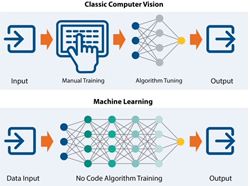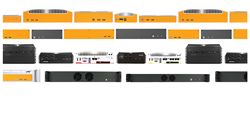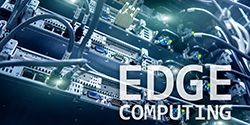How AI is reshaping the edge computing landscape
How much computing power is needed at the edge? How much memory and storage are enough for AI at the edge? Minimum requirements are growing as AI opens the door to innovative applications that need more and faster processing, storage, and memory.
Embrace the edge to avoid unscheduled downtime
One of the key metrics for process efficiency is overall equipment efficiency (OEE). This KPI is related to the availability, performance and quality of the production process. High OEE often means good revenue.
Sustainable manufacturing at the edge
In the wake of landmark climate event, COP26, manufacturers are striving to align their activities with the global net zero targets. But the sector has a long way to go. It currently produces more than 16 gigatons of carbon dioxide (CO2) each year.
AI for End-to-End Quality
Artificial intelligence (AI) is gaining favor as a solution for quality problems, but many manufacturers struggle with the perceived cost and complexity of implementing new technology.
AIoT and Edge Analytics: a Powerful Combination
Swedish philosopher Nick Bostrom once said, "machine intelligence is the last invention that humanity will ever need to make". AI decision making, with real time communication and data analytics, has the ability to transform the way manufacturers understand machines.
Leverage the Edge - the Benefits of Processing Data at the Edge, Not the Cloud
The edge is an essential layer of the manufacturing technology stack. Machines on the factory floor collect vast amounts of raw data from various sources using numerous protocols, which all needs to be processed quickly to gain actionable insight.
How to manage a complex network of new and legacy equipment
With rapid advancement in automated and connected technologies, managing both new and old equipment simultaneously can be a challenging balancing act.
Securing the OT edge with SASE
Manufacturers have become increasingly reliant on cloud-based resources, such as Software-as-a-Service (SaaS) applications and data migrating from the data center to multi-cloud environments. This requires a new model for secure network access.
10 Fundamental Computer Hardware Needs For Edge Computing
To cope with increasing amount of data, edge computing hardware is being deployed to alleviate the burdens placed on the cloud and data centers. So, what are the computer hardware needs for edge computing? We will answer this question in much detail.
Edge AI technology In Manufacturing Operations
A downside of so much automation is that there is now a heavier dependence on machinery/robots to perform action. For some lines, if one of robot goes down, the entire line does.
What's in Store for Edge Computing Deployments in 2020
During POC projects in the last few years, many organizations have confirmed the benefits that IIoT can bring to a wide variety of industries - and IoT spending is expected to reach $1.1 trillion by 2025, according to IDC.
How to Choose the Right Edge Computer
Choosing the right edge computer is not always easy. Every application has unique requirements that require thoughtful planning, especially for large scale deployments.
Why Edge Computing Is So Crucial for Industrial IoT
Edge computing serves two main purposes: extracting signal from noise by locally processing large volumes of data that are not feasible to send across the internet and providing the ability to process specific things locally where and when latency is a concern.
Edge Computing as it Relates to the Manufacturing Industry
Edge computing uses dedicated, on-premise resources at the shop-floor level, rather than the remote servers that cloud computing relies on. This provides a significant increase in the rate and amount of data that manufacturers can process in real-time.
Records 1 to 14 of 14
Featured Product

T.J. Davies' Retention Knobs
Our retention knobs are manufactured above international standards or to machine builder specifications. Retention knobs are manufactured utilizing AMS-6274/AISI-8620 alloy steel drawn in the United States. Threads are single-pointed on our lathes while manufacturing all other retention knob features to ensure high concentricity. Our process ensures that our threads are balanced (lead in/lead out at 180 degrees.) Each retention knob is carburized (hardened) to 58-62HRC, and case depth is .020-.030. Core hardness 40HRC. Each retention knob is coated utilizing a hot black oxide coating to military specifications. Our retention knobs are 100% covered in black oxide to prevent rust. All retention knob surfaces (not just mating surfaces) have a precision finish of 32 RMA micro or better: ISO grade 6N. Each retention knob is magnetic particle tested and tested at 2.5 times the pulling force of the drawbar. Certifications are maintained for each step in the manufacturing process for traceability.













